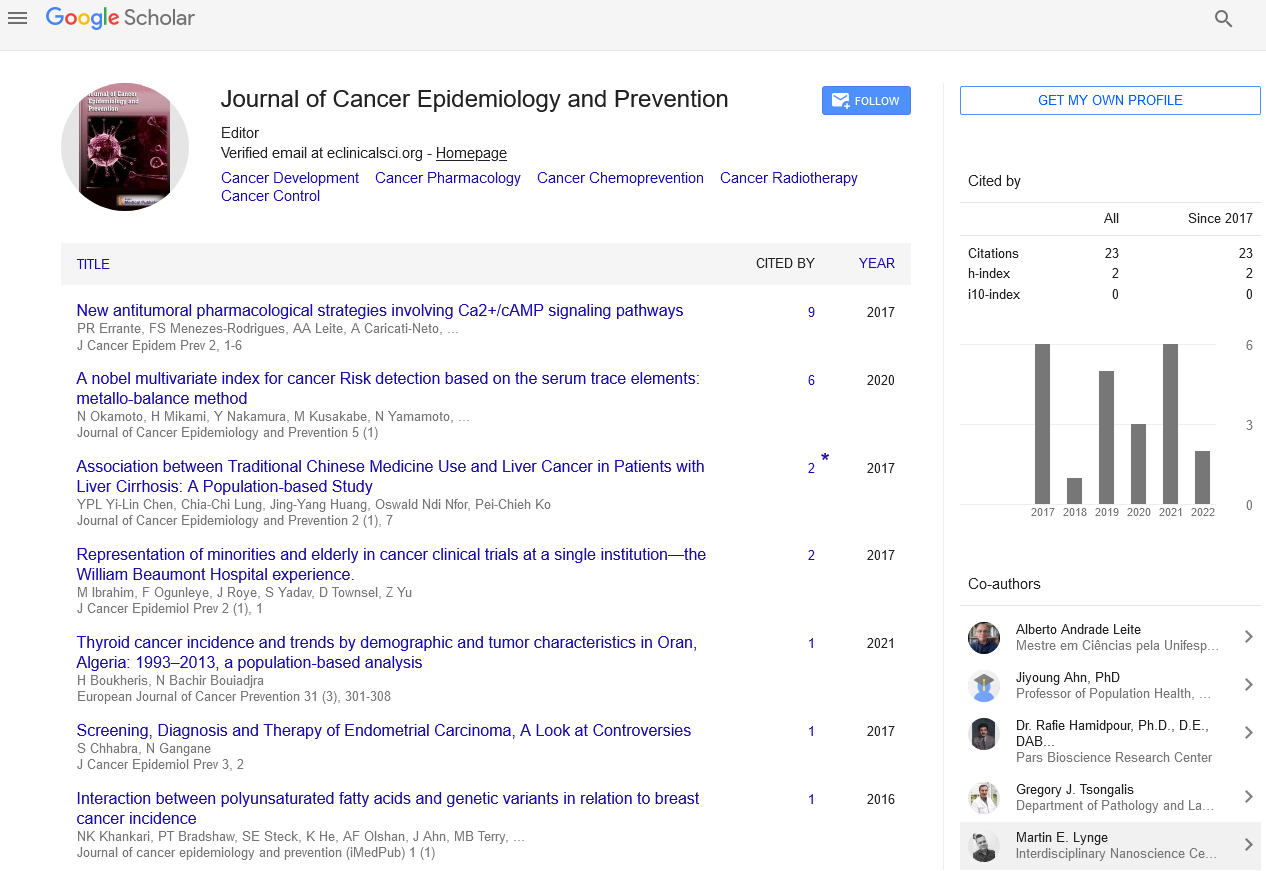Abidugun Azi*
Department of Medical Science, Elizade University, Ondo, Nigeria
- *Corresponding Author:
- Abidugun Azi
Department of Medical Science
Elizade University
Ondo, Nigeria
E-mail: aziabi@gun.in.com
Received Date: October 01, 2021; Accepted Date: October 15, 2021; Published Date: October 22, 2021
Citation: Azi A (2021) Barriers that Influence the Cancer Patient Survival Rate. J Cancer Epidemiol Prev Vol.6 No.5:6
Description
Many prior researches have indicated that the stage of
detection, or any cancer for that matter, has a significant impact
on the patient's survival rate. The survival rate for cancer rapidly
decreases as the stage of the disease increases, as shown in the
graph above. When compared to industrialised countries such as
the United States of America, the United Kingdom, and
Australia, where breast cancer survival rates are as high as 80%,
India's survival rate for breast cancer patients is only 50-60%.
This can be attributable to India's much lower screening rates.
There are several causes behind India's poor survival rate. Breast
cancer is under-recognized and the warning signals to look for.
Breast cancer is under-diagnosed due to a lack of knowledge
about the symptoms and how to identify it. There aren't enough
medical facilities or infrastructure to perform screening services.
Breast cancer screening is an expensive process. In India, there is
no large-scale breast cancer screening programme. In India,
there is a social stigma connected with breast cancer. Age,
monthly household income, whether or not the participant had
symptoms of breast cancer, previous family history of breast
cancer, how recently the participant had gotten screened, the
amount they paid to get screened, whether or not they
recommended screening to others, and their perception of
societal stigma around breast cancer are the parameters we will
look at.
Cancer, how much they would be prepared to spend in the
future to get screened, how often follow-up screening was recommended, and whether or not their screening was covered
by insurance or paid for by their employers. Please keep in mind
that this analysis only applies to people who had their chests
examined for cancer. A person showed symptoms of breast
cancer, how much they paid for getting screened, and how much
they would be willing to pay next time Lack of awareness of
breast cancer can range from a lack of knowledge about the
disease's prevalence to a lack of knowledge about the
importance of screening to a lack of knowledge about early
detection. Another factor to consider while examining why
India's breast cancer screening rate is so low is that women may
experience psychological difficulties in accepting the possibility
of being diagnosed with the disease. To begin with, they would
have no understanding of current breast cancer survival
statistics, and hence would be discouraged from seeking
treatment for such a lethal disease. Because the majority of the
participants were well-off, they did not cite a lack of funds as a
justification for not being examined. However, some participants
said that they were unable to get checked due to a lack of funds.
These were the 3% of the group who had not yet been screened.
In addition, all of the women who had breast cancer symptoms
but were not screened were included in the study. From the age
of 20, women should begin self-examination every month, seven
days following their period, according to a radiation oncologist
at BGS Global Hospitals. Women who are postmenopausal or
who do not have periods for any other reason can set aside a
day each month for self-examination.

